Text
The Venusaur Speculation Post
Well, I sure hated everything about this weekend.
Enough implications of personal whining, it's time for my first (and, frankly, favorite) fully-evolved starter: Venusaur.

(Lookit my happy flower boyyyyy)
So, if Ivysaur was an intermediate form, here we have a fully matured member of the species. The flower has fully bloomed, and the sauroid it's blooming from has gone from a relatively mobile body plan to a squat, more sedentary one. We have more visible teeth, and they're all sharp, indicating it has specialized even further towards rending meat from large kills.
While Ivysaur was mobile enough to dig a hole to hide itself in, Venusaur would either need to find just the right kinds of soil, or the affliction-based hunting strategy has become even more powerful, allowing it to stun prey from enough of a distance it doesn't need to be fully camouflaged.
While I wouldn't say conserving energy is the end-all be-all for a Venusaur, I can imagine that at some point in old age it'll hit diminishing returns. I'm guessing the flower stays in bloom, rather than forcing the Venusaur to bud and bloom repeatedly, which is...odd. It doesn't seem to function like a normal flower. Then again, it seems to have outsourced multiple plant functions, such as energy production, to the sauroid, leaving the flower to produce seeds and act as... well the main purpose of bright petals is to attract attention so--
Okay, yeah, it's to attract prey. Probably why it's called a Venusaur. Venus fly trap. Purposeful carnivorous plant comparisons. As a selective adaptation, Venusaur with a constant attractant probably fared better than Venusaur who had perennial flowers or other uneven energy consumption.
Thanks to a larger body size and more consistent energy needs, they're likely capable of larger broods. Probably between 5-10 eggs, average eight? But that'd likely mean females function as the singular head of a territory due to the needs of them and their extended clan. Which would explain the overwhelmingly male starters--reducing the males competing for places in these territories peacefully without losing the genetic diversity.
That's about all I have on this particular line for now. Still, I can't get over how toadlike their body plan looks to me. It's odd. It's like they started as amphibians before trading bodies adapted to water for bodies that were more plant-like. But I don't know, I don't like unique variations that are so isolated. For me to say that confidently I'd need examples of other pokemon-adapted symbionts, especially plant-based ones.
And then I realized something!

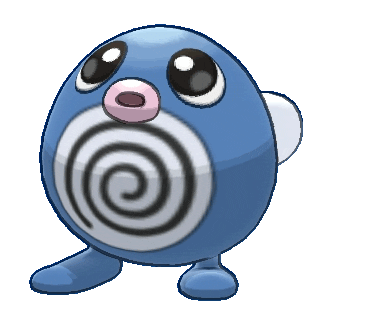
The doofy little feets! The eye placement! They both hang out in water! And they have evolutions that grow arms and hands!
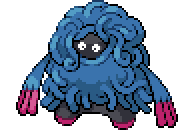
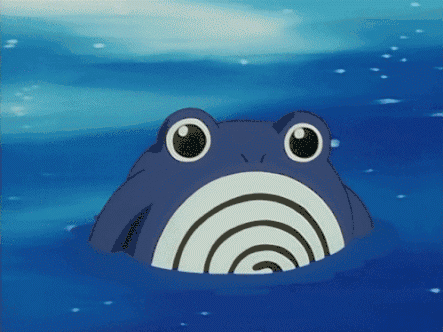
And they're from the same region as Venusaur too! So, yeah. I'm confident in saying Venusaur and it's earlier stages came from an amphibious species that adapted via symbiosis to be more plantlike than amphibious.
Next time, Charmander!
0 notes
Text
The Ivysaur Specpost
(internet outage made me post this out of drafts early, so those who saw it, here's the actual post.)
It's Ivysaur time, tumblr!
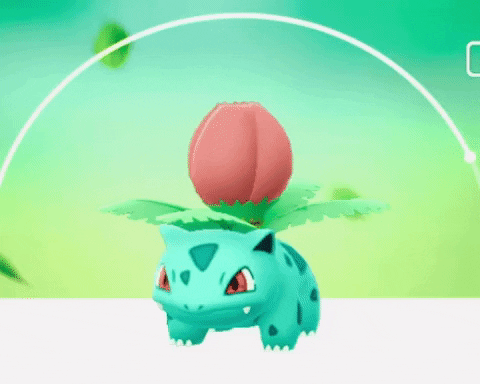
Immediately, we can see enough immediate differences to plot out how our symbiotic dino buddy might have gone from point A to point B. Case in point, that cute little set of fangs we see up there. I already guessed it was carnivorous, but now we have obvious incisors, we can see it's leveled up from smaller, bite sized prey to stuff where they actually need to tear off smaller pieces. Given, again, the Poison typing, I'm assuming this means they've gained enough of a control over their poison moves to take down bigger prey either solo or in small groups.
As stated in the previous post, I'm assuming evolutionary stages are an oversimplification. Given that, here is the next officially recognized stage, Ivysaur, where Bulbasaur has gained enough mass and has enough of an energy intake the bulb has become a bud.
I failed to mention the claws in the previous post, but they're a big reason I assume they're a terrestrial creature--claws like that give them an advantage in digging into the soil, either to make a nest for their eggs or to dig up rich, moist soil to hide their bodies and appear to be just a plant. Given the bud, formerly bulb, seems to be the locus of their Grass-type moves, they may be ambush predators that use spores, powders, and pollens to immobilize their prey before taking it down. It's a fairly resource-light method of hunting, which tracks with the aforementioned idea that their symbiosis with their plants came about when their ecosystem ceased to support their energy requirements.
While their nest sizes likely remain small--pokemon are fairly intelligent, and that means making a new one is going to be an energy-intensive process--the increased size of the pokemon means they can pack away more nutrients and thus make a more nutrient-dense egg to grow a new Bulbasaur in, resulting in larger, healthier offspring on hatching and a greater flexibility in when they can lay their eggs.
This is probably around the time a 'saur becomes invested in claiming and holding territory of their own. The bud has not yet bloomed, and I have the feeling that once that process starts, it's not going to stop on its own, and that means it's gotta be fed. Which means Ivysaur who aren't properly fed are going to act up. Possibly to the point of trainer abandonment if a trainer doesn't properly supply their pet dinosaur and the flower rooted in it's internal organs with an appropriate diet.
More ramblings in the Venusaur post!
4 notes
·
View notes
Text
So I've been thinking about Pokémon. I do that a lot. My inner Zoobooks kid demands it. But recently I was rewatching some of the old anime for Reasons and realized the games exist in universe as some sorta goofy edutainment simulator. Made me start thinking about 'what if the games oversimplify pokémon biology like Odell's Lake and the like oversimplify real world biology' and uh. With all due gratitude to @bogleech (who does reviews for pokemon designs that I adore) and the nature YouTubers I consume daily.
I would like to yell at you about Bulbasaur a little, Tumblr.
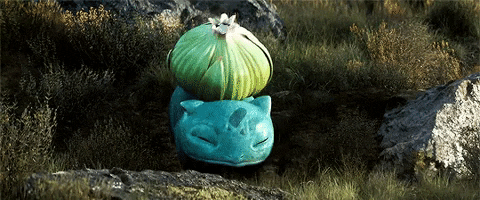
So imma get real nerdy real fast here. I love me some speculative extrapolation.
First off let's look at one of the official game designs real quick.

Okay, so, a sauroid design--I know that seems obvious from the name but hold on here, I have a point.
So here we have a large quadrapedal exotherm with obvious green coloration. Not just dull green, bright green. Given the species line is famous for learning Solar Beam, an attack that necessitates gathering sunlight and transforming it into an attack, we can probably be safe in assuming a lot of that green is chlorophyll, making this a rare non-marine vertebrate capable of using chlorophyll to produce energy for itself. And, occasionally, to gather enough energy to tell predators to step off.
The bulb and the... well, the 'saur, appear to be a package deal, but the bulb is not only distinct from the main body, it may be the primary source of its Grass typing, with the Poison typing belonging to the sauroid hefting that bulb around. That kinda distinction leads me to believe the bulb doesn't naturally grow on the Bulbasaur, and may be the result of a parent or sufficiently trained human implanting the seed for the bulb in its back. Meaning the body can have a set of two genetic parents while the bulb can have genetics coming from any flowering plants of that species in whatever area they're born to.
I wonder if the sauroids without bulbs are capable of surviving on their own or if this was an adaptation out of necessity. Like how megafauna in our actual world died off when the ecosystem could no longer support their energy needs. Are the bulbs needed to get to their size, leaving unaided young smaller to survive without the energy boost? If they were smaller and had weaker skin without the Grass-type boosting, I can see them being analogous to venomous toads. If they're needed for survival, it implies strong social ties, possibly entire colonies or troops of their evolutionary line, in order to provide new 'Saurs with their bulb seeds.
Also, if the two parts of the Bulbasaur are distinct, that implies the bulb is supplementing a diet that was already supporting the animal body. Given the name of the final evolution is Venusaur, I'm going to assume insects, probably birds and rodents once it grows larger and slower.
I'm almost entirely sure this thing lives in and around rainforests and jungles. Lots of moisture and sunlight for the chlorophyll and lots of biodiversity (to feast upon). It also fits with the assumed venomous amphibian origin.
I'm going to assume one of the oversimplifications is the evolution system, and that means the Bulbasaur, as pictured above, is a recognized and therefore official species for use in pokémon sport. There's probably all manner of variants not officially recognized, like ones that don't have their bulb, or who had their bulb seed malform somewhere along the line, or shift position in a way that hinders mobility. It also indicates a Bulbasaur that's battle ready can also lay or sire eggs, though without a ready support system, they're reliant on human aid to properly raise their young with bulbs. Based on body plan and energy requirements, I'm guessing covered nest with between one and three eggs, warm, kept damp, so the heat equally incubated the eggs. When they hatch, the young are kept hydrated and tucked away while a seed is implanted in their soft backs. Eventually, they are exposed more and more to the sunlight and the energy from that and catches brought to the nest helps them grow quickly until the adorable little starter beasts we so love.
There's more. There so much more. But I'll cover that next post or I'll ramble over the word limit.
14 notes
·
View notes